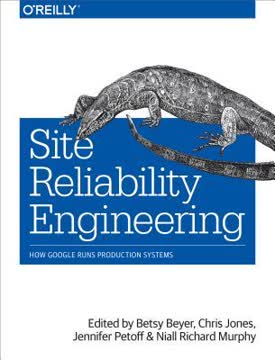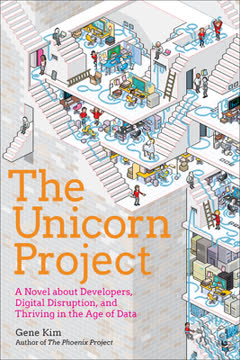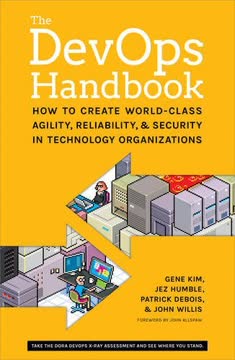Key Takeaways
1. The First Ideal: Locality and Simplicity in Systems and Organizations
"Complect" means to turn something simple into something complex.
Simplicity enables effectiveness. In both software systems and organizational structures, simplicity and locality are crucial for efficiency and innovation. Complex, tightly coupled systems make changes difficult and unpredictable, while simple, loosely coupled systems allow for easy modifications and independent work.
Examples of complexity in systems:
- Interdependent software components
- Overly bureaucratic approval processes
- Siloed departments with poor communication
Benefits of simplicity and locality:
- Faster development and deployment cycles
- Reduced risk of unintended consequences
- Improved ability to innovate and adapt
2. The Second Ideal: Focus, Flow, and Joy in Daily Work
Work is not fun and full of joy, like I know it should be. There is no flow of features, there is no feedback, and there certainly isn't any learning.
Creating an environment for optimal performance. The Second Ideal emphasizes the importance of creating work conditions that allow for focus, flow, and joy. This leads to higher productivity, better quality work, and increased job satisfaction.
Key elements for achieving focus, flow, and joy:
- Clear goals and immediate feedback
- Balanced challenges and skills
- Minimized distractions and interruptions
- Autonomy and sense of control
- Meaningful work with visible impact
Obstacles to flow in software development:
- Long wait times for approvals or resources
- Frequent context switching
- Lack of visibility into the impact of one's work
- Overly complex systems or processes
3. The Third Ideal: Improvement of Daily Work Over Daily Work Itself
It is ignorance that is the mother of all problems, and the only thing that can overcome it is learning.
Continuous improvement as a core value. The Third Ideal emphasizes the importance of consistently improving work processes and systems, rather than solely focusing on completing daily tasks. This approach leads to long-term efficiency gains and innovation.
Strategies for implementing the Third Ideal:
- Allocate time for process improvement
- Encourage experimentation and learning
- Implement regular retrospectives
- Create feedback loops for continuous learning
Examples of improvement activities:
- Automating repetitive tasks
- Refactoring code to reduce technical debt
- Streamlining approval processes
- Investing in training and skill development
4. The Fourth Ideal: Psychological Safety and Learning from Failure
No one will take risks, experiment, or innovate in a culture of fear, where people are afraid to tell the boss bad news.
Creating a culture of trust and learning. Psychological safety is crucial for innovation, problem-solving, and continuous improvement. It allows team members to take risks, share ideas, and learn from failures without fear of punishment or ridicule.
Key elements of psychological safety:
- Open communication and transparency
- Blame-free problem-solving
- Encouraging diverse perspectives
- Celebrating learning from failures
Practices to foster psychological safety:
- Conduct blameless post-mortems after incidents
- Encourage experimentation and calculated risk-taking
- Lead by example in admitting mistakes and uncertainties
- Recognize and reward learning and improvement efforts
5. The Fifth Ideal: Customer Focus and Creating Real Value
Instead we ask whether our daily actions truly improve the lives of our customer, create value for them, and whether they'd pay for it.
Aligning work with customer needs. The Fifth Ideal emphasizes the importance of focusing on creating real value for customers, rather than getting caught up in internal processes or metrics that don't directly benefit the end-user.
Strategies for maintaining customer focus:
- Regular customer feedback and research
- Cross-functional teams with direct customer interaction
- Measuring success based on customer outcomes
- Rapid prototyping and iterative development
Examples of customer-focused initiatives:
- Personalized product recommendations
- Streamlined user interfaces
- Proactive maintenance alerts
- Responsive customer support channels
6. Balancing Core vs. Context: Investing in Innovation While Managing Costs
There are services we should get out of the business of operating. One of the places I'm thinking about is my old mid-range group. We've created the Galapagos Islands of technologies, which served us well for decades, but we've drifted so far from where the entire industry has gone that we haven't been able to benefit from all the things the industry vendors have created.
Strategic resource allocation. Balancing investment in core competencies (activities that provide competitive advantage) with context (necessary but non-differentiating activities) is crucial for long-term success. This involves making tough decisions about what to keep in-house, what to outsource, and where to invest for future growth.
Strategies for balancing core and context:
- Identify and prioritize core competencies
- Streamline or outsource context activities
- Invest in innovation and new capabilities
- Regularly reassess the core/context balance
Examples of core vs. context in technology:
- Core: Proprietary algorithms, unique user experiences
- Context: Email servers, basic IT infrastructure
7. Rebellion Against Bureaucracy: Empowering Teams to Drive Change
We are the Rebellion showing the ancient, powerful order how kickass engineering work is done!
Bottom-up innovation and change. The concept of the "Rebellion" represents the power of motivated individuals and teams to drive positive change within an organization, even in the face of bureaucratic resistance.
Characteristics of successful "rebellions":
- Passionate, skilled team members
- Clear vision and shared goals
- Willingness to challenge the status quo
- Focus on delivering tangible results
Strategies for fostering positive rebellion:
- Create spaces for experimentation and innovation
- Empower teams to make decisions
- Celebrate and share successes
- Provide top-level support for grassroots initiatives
8. DevOps and Continuous Integration: Accelerating Software Delivery
We need builds so that developers can actually do their work.
Streamlining the development process. DevOps practices and continuous integration/continuous deployment (CI/CD) pipelines are crucial for increasing the speed and reliability of software development and delivery.
Key benefits of DevOps and CI/CD:
- Faster time-to-market for new features
- Improved code quality and stability
- Reduced risk in deployments
- Better collaboration between development and operations
Essential DevOps practices:
- Automated testing and builds
- Infrastructure as code
- Continuous monitoring and feedback
- Collaborative culture between Dev and Ops teams
9. Data-Driven Decision Making: Leveraging Analytics for Business Success
Data is the lifeblood of the company. In Marketing, almost all of us access or manipulate data to guide the efforts of the company.
Harnessing the power of data. Leveraging data analytics and machine learning can provide valuable insights, improve decision-making, and drive business success across various domains.
Applications of data-driven decision making:
- Personalized marketing and recommendations
- Inventory optimization
- Predictive maintenance
- Customer segmentation and targeting
Key elements of a successful data strategy:
- Data quality and governance
- Accessible and usable data platforms
- Data literacy across the organization
- Ethical considerations and privacy protection
10. Leadership in Digital Transformation: Navigating Organizational Change
You are in charge of a century-old business that might finally be climbing out of its doldrums, thanks to the heroic work of Maggie, Kurt, and Maxine.
Guiding organizations through change. Effective leadership is crucial for navigating the challenges of digital transformation and organizational change, especially in established companies facing disruption.
Key leadership qualities for digital transformation:
- Vision and strategic thinking
- Willingness to challenge the status quo
- Ability to balance short-term and long-term goals
- Empowering and developing talent
Strategies for successful transformation:
- Clear communication of goals and progress
- Creating a culture of innovation and experimentation
- Investing in employee skills and capabilities
- Balancing legacy systems with new technologies
Last updated:
FAQ
What's The Unicorn Project about?
- Digital Transformation Story: The Unicorn Project follows Maxine Chambers, a lead developer at Parts Unlimited, as she tackles the challenges of a failing IT project called the Phoenix Project. It delves into themes of DevOps, digital disruption, and developer productivity.
- Team Dynamics Focus: The narrative emphasizes collaboration among Development, QA, and Operations teams, highlighting how their interactions can impact project success. Effective communication and trust are key themes.
- Leadership and Culture Lessons: Through Maxine's journey, the book illustrates how organizational culture affects productivity and innovation, advocating for a supportive and psychologically safe work environment.
Why should I read The Unicorn Project?
- DevOps Insights: The book offers a deep dive into DevOps principles, providing practical insights for improving software delivery and operational efficiency.
- Engaging Narrative: Written as a novel, it makes complex concepts relatable and easier to understand, keeping readers engaged while imparting important lessons.
- Relevance to Modern Challenges: The themes of digital transformation and IT struggles resonate with current industry challenges, encouraging readers to reflect on their work environments.
What are the key takeaways of The Unicorn Project?
- Locality and Simplicity: The First Ideal emphasizes designing systems to promote simplicity, allowing teams to work independently and efficiently.
- Focus, Flow, and Joy: The Second Ideal highlights creating a work environment that fosters focus and flow, crucial for maintaining motivation and engagement.
- Improvement of Daily Work: The Third Ideal stresses continuous improvement in daily work processes, leading to better outcomes and a more resilient organization.
What are the Five Ideals in The Unicorn Project?
- Locality and Simplicity: Encourages designing systems for simplicity, enhancing efficiency and reducing complexity.
- Focus, Flow, and Joy: Promotes an environment where teams can work effectively and find joy in their work, minimizing distractions.
- Improvement of Daily Work: Advocates for continuous improvement in processes, encouraging teams to regularly reflect and enhance effectiveness.
- Psychological Safety: Emphasizes creating a safe environment for open communication and risk-taking, fostering collaboration.
- Customer Focus: Stresses prioritizing customer needs and ensuring work aligns with delivering value to customers.
How does The Unicorn Project address the concept of technical debt?
- Definition and Impact: Technical debt is defined as the consequences of shortcuts in software development, which can hinder future progress.
- Productivity Challenges: The narrative shows how technical debt can slow down development and create frustration, highlighting the need for prioritizing its reduction.
- Management Strategies: Advocates for integrating technical debt management into daily work practices, fostering a healthier work environment and enhancing productivity.
What is the significance of the "Rebellion" in The Unicorn Project?
- Symbol of Change: The Rebellion represents engineers committed to improving their work environment and challenging the status quo.
- Developer Empowerment: Emphasizes empowering developers to take ownership of their work, aligning with themes of locality and simplicity.
- Catalyst for Transformation: Aims to drive significant organizational changes, serving as a model for overcoming obstacles through collaboration.
How does The Unicorn Project illustrate the importance of psychological safety?
- Open Communication: Psychological safety allows employees to speak up about problems without fear, crucial for identifying and addressing issues.
- Fostering Innovation: Encourages experimentation and innovation, as employees feel empowered to take risks and share ideas.
- Building Trust: Helps build trust among team members, enabling effective collaboration and achieving shared goals.
What role does leadership play in The Unicorn Project?
- Modeling Behaviors: Leaders model desired behaviors like open communication and focus on improvement, setting the tone for organizational culture.
- Removing Obstacles: Effective leaders remove obstacles hindering team success, addressing bureaucratic processes and ensuring necessary resources.
- Empowering Employees: Illustrates the importance of empowering employees to take ownership and make decisions, fostering confidence in their abilities.
How does The Unicorn Project relate to real-world IT challenges?
- Industry Trends Reflection: Addresses challenges like digital transformation, DevOps adoption, and the need for agility, providing relevant insights.
- Practical Solutions: Offers practical solutions for overcoming common IT challenges, such as managing technical debt and improving team collaboration.
- Encouragement for Change: Serves as a call to action for IT professionals to advocate for positive change within their organizations.
How does The Unicorn Project address the challenges of legacy systems?
- Legacy System Burden: Illustrates how legacy systems hinder innovation and agility, presenting obstacles due to outdated technology and processes.
- Need for Modernization: Emphasizes modernizing systems for faster, more efficient operations, aiming to better serve customer needs.
- Cultural Resistance: Highlights cultural resistance to changes in legacy systems, requiring strong leadership and a supportive environment for success.
What are some memorable quotes from The Unicorn Project and what do they mean?
- “Safety is a precondition of work.”: Emphasizes that a safe work environment is essential for productivity and innovation, prioritizing employee well-being.
- “A bad system will beat a good person every time.”: Highlights the importance of effective systems and processes, suggesting that talent alone can't overcome poor design.
- “Technical debt is what you feel the next time you want to make a change.”: Defines technical debt as the consequences of shortcuts, reminding of future challenges if unaddressed.
What is the significance of the title The Unicorn Project?
- Symbol of Innovation: "Unicorn" symbolizes innovation and the pursuit of extraordinary goals, representing the aspiration for remarkable outcomes.
- Contrast with Legacy: Contrasts the mythical unicorn with a traditional company struggling to adapt, underscoring the transformation journey.
- Cultural Shift: Reflects the cultural shift within Parts Unlimited, embracing new ways of working and thinking, signifying hope and possibility.
Review Summary
The Unicorn Project receives mixed reviews. Many readers appreciate its insights into DevOps and software development practices, finding it entertaining and informative. However, some criticize the unrealistic portrayal of corporate transformation, underdeveloped characters, and overemphasis on technical jargon. The book's focus on work-life imbalance and glorification of overtime also draw criticism. While some consider it a valuable resource for understanding modern software development, others feel it falls short compared to its predecessor, The Phoenix Project.
The Phoenix Project Series
Similar Books










Download PDF
Download EPUB
.epub digital book format is ideal for reading ebooks on phones, tablets, and e-readers.








